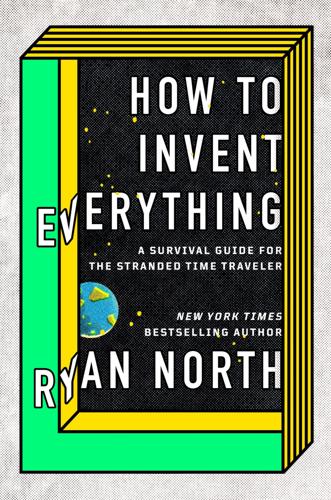
How to Invent Everything: A Survival Guide for the Stranded Time Traveler
by
Ryan North
Published 17 Sep 2018
—You (also, Daniel Defoe) WHAT THEY ARE A way to disseminate information en masse both quickly and cheaply, which is great if you want to get into the dissemination-of-information-en-masse business BEFORE THEY WERE INVENTED Books were extremely expensive, so only rich people read them, which meant all the non-rich people who might’ve come up with amazing ideas if only they could metaphorically stand on the shoulders of giants found that they couldn’t,* and so civilization wasn’t becoming nearly as great as it could if it were harnessing the full potential of every human brain within it, which is complete baloney ORIGINALLY INVENTED 33,000 BCE (stencil paintings of hands) 200 CE (woodblock printing) 1040 CE (moveable type in China) 1440 CE (moveable type in Europe) 1790 CE (rotary press) PREREQUISITES pigments (for ink, see Section 10.1.1: Charcoal), paper (for printing), pottery (optional, for building letters), metalworking (to build the press, though this is technically optional and they can be built out of wood), glass (for eyeglasses, so that everyone can read papers, even the farsighted, who might not even realize they’re farsighted until you ask them to read tiny letters on paper held in their hands) HOW TO INVENT If you’ve got pigment (which you can get from charcoal in Section 10.1.1), and you’ve got something you can cut (like paper, but even large leaves work), then you can make stencils of words—and therefore mass produce books—in any time period you care to name.* The earliest stencils humans ever made were of their hands, and some of them survived on cave walls into the modern era.

Paper: A World History
by
Mark Kurlansky
Published 3 Apr 2016
The type was laid into an iron plate with a paste of pine resin, wax, and ashes of burned paper. When the type was completely set, he heated the iron plate to melt the paste and then pressed the type with a board so that the individual types would all be of even height. As early as the twelfth or thirteenth century, both China and Korea may have been printing with moveable type made from metal, which was an important improvement over wood and clay. The purpose of printing is defeated if the type wears out after a limited number of uses, as it would inevitably do with those earlier materials. But wooden type was still being used in the fourteenth century.
…
TIMELINE 38,000 BCE A red dot painted on the El Castillo cave in Northern Spain is thought to be the oldest image drawn by man. 3500 BCE Oldest writing ever found in Mesopotamia on limestone. 3300 BCE Oldest writing on clay tablet found in Uruk, southern Babylonia (Iraq), the beginning of cuneiform. 3000 BCE Date of oldest papyrus, a blank scroll in the tomb of Saqqara, near Cairo. 3000 BCE Beginning of Egyptian Hieroglyphic writing. 2500 BCE First script in the Indus valley. 2400 BCE Oldest known Egyptian book, written on woven linen. 2200 BCE Writing on copper and pottery in the Indus valley. 2100 BCE Date of the oldest piece of tapa, a fragment found in Peru. 1850 BCE Date of the oldest-known document written on leather, an Egyptian scroll. 18TH CENTURY BCE First writing system in Crete. 1400 BCE Writing on bones in China. 1300 BCE Writing on bronze, jade, and tortoise shell in China. 1200 BCE Characters for Chinese language developed. 1100 BCE Egyptians begin exporting papyrus, first to Phoenicians. 1000 BCE Phoenician alphabet begins. 600 BCE Zapotec/Mixtec writing in Mexico. 600 BCE Accounts written on wooden tablets in China and Greece. 5TH CENTURY BCE Chinese write on silk. 400 BCE The Ionian alphabet becomes standard in Greece. 400 BCE True ink from lampblack invented in China. 300 BCE King Eumenes II of Pergamum, barred from importing papyrus, builds a library of 200,000 volumes in parchment. 3RD CENTURY BCE Library at Alexandria. 255 BCE First mention of seals in China but used without ink in clay. 252 BCE The dating of the oldest piece of paper ever found in Lu Lan, China. 250 BCE In China Meng Tian invents the camel’s hair brush for calligraphy. 250 BCE Mayan hieroglyphic writing. 207 BCE Beginning of the Chinese Han dynasty, in which paper is developed. 63 BCE Strabo, the Greek geographer, writes of marveling at a watermill in the palace of Mithridates, King of Pontus, along the Black Sea. 31 BCE The earliest known Olmec glyph writing. 30 BCE Romans conquer Egypt and spread papyrus in the Mediterranean world. 1ST CENTURY CE Wax tablets used for temporary writing in Rome. 75 CE The last inscription written in cuneiform. 105 CE The eunuch Cai Lun of the Chinese Han court is credited with inventing paper. 2ND CENTURY CE Runic alphabet created in Scandinavia. 250–300 Approximate date of paper found in Turkestan. 256 First known book on paper, the Phi Yu Ching, produced in China. 297 Earliest known Mayan calendar, carved in stone. 394 Last inscription written in Egyptian hieroglyphics. 5TH CENTURY Japanese develop their own alphabet. 450 Date of earliest known writing on palm-leaf fragments of a manuscript found in northwestern China. 476 Official end of classical antiquity as the last Western Roman emperor, Romulus Augustus, is overthrown. 500 Mayans begin writing on amate. 500–600 Mayans develop bark paper. 548 The king of Paekche (Korea) sends sutra and statues made of paper to Japan. 610 Korean monk Dancho takes papermaking to Japan. 630 Muhammad conquers Mecca. 651 Paper is made in Samarkand. 673 Monks at the temple of Kawahara begin copying Buddhist scriptures, which soon became a major activity in Japan. 8TH CENTURY China starts printing. 706 Arabs bring paper to Mecca 711 An Arab-led Berber army crosses the Straits of Gibraltar from Morocco into Spain. 712 Earliest known piece of Japanese literature, Kojiki, is written in Chinese. 720 Use of paper in Japan greatly expands as Japan becomes Buddhist. 751 Papermaking in Samarkand begins. 762–66 Baghdad founded. 770 Japanese empress Shōtoku orders the first known printing on paper, 1 million copies of a prayer to drive away disease. 795 Rag paper mill opened in Baghdad. 800 Paper first used in Egypt. 832 Muslim conquest of Sicily. 848 Date of the oldest-known complete book in Arabic on paper. 850 Estimated date of earliest known version of One Thousand and One Nights. 868 The Diamond Sutra, the oldest printed book ever, is found. 889 Mayans begin writing all their records on paper rather than stone. LATE 9TH CENTURY Baghdad becomes an important papermaking center. 900 Egyptians begin making paper. 969 Earliest known use of playing cards in China. 1041–48 Date of earliest known moveable type in China made of earthenware set in an iron form. 900–1100 Mayans write the Dresden Codex. 1140 Papermaking begins in Muslim Spain in Xátiva. 1143 The Qur’an is translated into Latin. 1264 First record of papermaking in Fabriano, Italy. 1282 First watermarks, in Fabriano, Italy. 1308 Dante begins writing The Divine Comedy. 1309 Paper first used in England. 1332 Paper first used in Holland. 1338 Papermaking starts in Troyes. 1353 Boccaccio writes The Decameron. 1387 Chaucer starts writing Canterbury Tales. 1389 German papermaking begins in Nuremberg. 1403 King Taejong of Korea orders bronze type. 1411 Papermaking begins in Switzerland. 1423 Earliest known European block prints. 1440–50 First European block books. 1456 Gutenberg completes printing his first Bible with moveable type. 1462 Mainz is destroyed and its printers disperse. 1463 Ulrich Zell starts the Cologne printing industry. 1464 The Subiaco Monastery near Rome becomes the first print house in Italy. 1469 Epistolae ad Familiares by Cicero is the first book printed in Venice. 1473 Lucas Brandis establishes first printing press in Lübeck. 1475 OR 1476 Le livre de merveilles du monde becomes the first book printed in the French language. 1477 William Caxton opens Britain’s first printing press 1494 Aldus Manutius starts the Aldine Press in Venice. 1495 John Tate establishes the first paper mill in England in Hertfordshire. 1502–20 Aztec tribute book lists forty-two papermaking centers.
…
A., 261 Milton, Mass., 213–14 Ming dynasty, 296, 300, 302, 303 Minoans, as possible inventors of moveable type, 109–10 Miró, Joan, 268 mitsumata, 309, 312 Moche, 4 molds, 33, 187–88, 221–22, 301, 302, 308–9, 311, 312, 317 wire, 72, 80–81, 83, 228 Moll Flanders (Defoe), 196 monasteries, 93–94 money, paper, see paper money Mongolia, Mongols, 27, 65, 87 Moniteur, 233 Monmouth, Battle of (1778), 221 Monte Alegre, Brazil, 285 Montecuçoma (Montezuma), 155–57, 161 Montoya, Diego de, 160 Moon Ik-jeom, 106 Moore, Gordon, 328 Moore’s Law, 328 Moriscos, 157 Morning Chronicle, 204 Morning Post, 204 Moronobu, Hishikawa, 265–66 Morris, William, 256–57 Moses (prophet), 9 Mosher, Thomas Bird, 257–58 mosques, 60 Motolinía (Toribio de Benavente), 155, 158 moveable type, see printing, with moveable type Mozi, 26 Mubashshir ibn Fatiq, al-, 180 Muhammad (prophet), 49, 51–52, 339 Muhammad VIII, sultan of Granada, 73 Mukhtar al-hikam wa mahasin al-kalim (al-Mubashshir ibn Fatiq), 180 mulberry, 10, 11, 33, 43, 45, 88, 99, 104, 149, 161, 272, 305, 306, 309, 312 Munch, Edvard, 267 Mūsá bin Nușayr, 67 music, 70, 91–92, 196 Muslims, Islam: calligraphy of, 52, 55 spread of, 49–51 Iberia conquered by, 67–68 intellectual achievements of, xix literacy of, 52 parchment used by, 56–57 Spanish persecution of, 157–58 Sunni–Shi’a schism and, 51, 60, 74 Nabu (Assyrian god), xx Nahuatl, 153, 156 Naoke, Tange, 312 Naples, Italy, 73, 134 Napoleonic Wars, 245 Nassau, Adolf von, archbishop of Mainz, 133 Nast, Thomas, 259 National Security Agency (NSA), 334 Navigation Act of 1663, 210 navigational charts, 93 Nawbakht, 50, 58 Near East, 13 Negker, Jost de, 128 Neponset River, 208 Netherlands, see Holland; Lowlands Neuchatel, 231 Newberry, John, 202 Newcomen, Thomas, 238 New England, 206, 281 New Hampshire, 211 New Haven, Conn., 218, 277 New Iberia, La., 285 New Jersey, 211 New Rochelle, N.Y., 185, 258 Newsonomics, 331 newspapers, 262, 342 advertising and, 330–31 in American colonies, 211–13, 220, 342 cartoons in, 263 in French Revolution, 233 future of, 331–32 in Great Britian, 331, 343 growing readership of, 226, 237, 247–48 in India, 331 paper and, 202–4 photography in, 258 Stamp Act and, 217 in US, 330–31 newsprint, 252, 254, 281, 286, 289, 295 declining sales of, 330 Newton, Isaac, 194–95, 231 New York, N.Y., 209–10 New York Assembly, 220 New York colony, 210, 211, 216, New Yorker, 332–33 New York Gazette, 210 New York Public Library, 255 New York state, 281 New York Times, 330–31 New York Tribune, 247 Neyroumande, Emmanuelle, 283–84 Niaux, France, cave art in, 3 Nicolson, William, 262 Niépce, Claude, 236 Niépce, Joseph Nicéphore, 236–37, 343 Nile River, 9, 12 “Ninety-Five Theses on the Power and Efficacy of Indulgences, The” (Luther), 163 Ningbo, China, 295, 296 Nolde, Emil, 267–68 Norfolk, England, 191 nori, 313–14 North Africa, xv, 52, 74 papermaking in, 71, 73–74 North Carolina, 220 Northern Renaissance, 163 North Newington Mill, 242 Norton, Charles Eliot, 257 novels, wordless, 269–70 numerals: Aztec, 152–53 base-ten system of, 58, 86 numerals (continued) Hindu-Arabic, 58, 70, 86, 87, 89, 91 Mayan, 149 Roman, 58, 77, 84, 87, 91 Nuremberg, Germany, 83, 111, 125, 126 papermaking in, 122, 340 printing industry in, 122–23 Nuremberg Chronicle (Die Schedelsche Weltchronik) (Schedel), 123 Odyssey (Homer), 17 offset printing, 263 Ogama-Machi, Japan, 311–12 Oh Sang Youl, 306 O’Kane, Helen M., 258 okra, 250 Old Man with Noose (Kollwitz), 267 Oliver Twist (Dickens), 261 Olmecs, 148 Onderdonk, Hendrick, 210 One Thousand and One Nights, 61–62, 95, 340 Ontario, Canada, 282 Open and Empty (Wang), 315 oral literature, 20–21, 60 in China, 39 in France, 234 rhythmic nature of, 17, 335 survival of, 335–36 origami, 320–21 Ortelius, Abraham, 176 Otomi people, 160 Ottoman Empire, 50 Ovid, 172 Ozu Shoten paper museum, 307 Pacioli, Luca, 91 packaging, paper for, 334 Padua, Italy, 82 Pagenstecher, Albrecht and Rudolf, 252 Paine, Roxy, 319 Paine, Thomas, 202–3, 216–17 Pakistan, 50 Palazzo Medici, 120 pamphleteering, 202–3 pamphlets, 217, 228, 230 Panckoucke, Charles-Joseph, 233 Paoli (Pablo), Giovanni, 159–60 paper, 204, 241 acid content of, 45 acid-free, 255 advantages of, over earlier recording media, 2 in architecture, 308–9, 314–15, 322 art, machine-made, 265, 269, 280 art from, 318, 320–21 blue, 190, 199 brown, 72, 121, 169, 184, 187, 189, 190–91 bureaucracy and, 32, 44–45, 52 calculations and, 119 Chinese invention of, xiv, xviii, 23, 28–31, 178, 338, 344 colored, 42, 45, 72–73, 214, 232, 264 cost of, 80, 229–30 deckle edge, 187, 258 drawing, 197 Europeans as slow to adopt, xv, xix, 73, 77, 78, 83, 85 exploding demand for, 226 fiber, 278 for guns and ammunition, 190, 220–21, 242, 278 journalism and, 202–4 laid, 197, 269, 279–80 marbling of, 191–93 as mark of civilization, xviii–xix for packaging, 334 predicted “death” of, 326–27 printing and, see printing raw (unsized), 303 recycled, 45, 291–92, 294–95 Renaissance and, 117, 118–22 science and, 194 security of, vs. online communication, 334 shortages of, 231, 285 silk-thread, 242 specialized uses of, 34, 46–47, 57, 189–91, 199, 232, 253, 271–74 as superior medium for drawing, 118–19 as superior medium for printing, 108–9, 117 US tariffs on imports of, 224–25 white, 56, 72, 137, 140, 169, 171, 183, 184, 187, 189, 199, 232, 254, 279, 342, 343 wove, 197, 222, 264, 269, 279–80, 318 paper, forerunners of: in Mesoamerica, xiv, 148–50, 152–54, 156–57 tapa, 10–11, 149, 153–54, 337 see also papyrus; parchment paper, handmade (modern), 257–58, 269, 272, 275, 293 in China, 299–305 in Japan, 299, 305, 306–13, 314–16 in Korea, 305–6 in Spain, 316–18 in US, 318–19 paper airplanes, 273 paperboard, 191, 242 papermaking, xv–xvi with bagasse, 284–88 bleaching and, 171, 239, 288, 301, 342, 343 Buddhism and, xv, xviii, 42, 44, 49, 98, 339 continuous-roll machines for, 240–41, 242, 243–44, 245–46, 255, 276, 279–84, 288, 318, 343 controversies over, 185–86, 281, 289 drop hammers in, 80, 83 energy demands of, 289, 295 environmentalism and, 282–84, 289–92, 297, 299–300 with esparto grass, 250 felting mills and, 79 impact on artists of, 198–202 Jews and, 71 with mill sweepings, 250 molds in, 33, 72, 80–81, 83, 187–88, 221–22, 228, 301, 302, 308–9, 311, 312, 317 rags in, see rags, in papermaking with red algae, 314 Schäffer’s experiments with, 249–50 single-sheet machines in, 242–43 sizing in, 33, 83, 169 specialized, 189–91, 197–98, 199, 201–2, 277–78, 286 stampers in, 142, 169–70, 214 steam power and, 239 with straw, 250 by wasps, 248–49, 343 watermarks in, 72, 81, 83, 222, 240, 277, 280, 340 waterwheels and, 55, 80, 83 papermaking (continued) wood pulp in, see wood pulp, in papermaking see also specific countries and regions Paper Mill, 282 paper money, 88, 240, 255, 277, 278 in American colonies, 209, 211, 222, 341 in China, 34, 87, 192 counterfeiting of, 222 Franklin and, 192 watermarks of, 222 paper workers: in France, 228–29 guilds of, 96, 241, 244 industrialization and, 241, 244 life expectancy of, 96, 142 papier-mâché, 190 Papyrer, Der (Amman), 188 papyrus (plant), 9, 12 papyrus (writing surface), xvi, 9–10, 12, 56, 109, 176, 337 Arabs and, 53 export of, 11, 14, 337 parchment vs., 14 scrolls of, 10 sizing on, 11 Paradiso (Dante), 84, 115 Paramonga, Peru, 285 parchment, xvi, xx, 78, 84, 93, 97, 116, 197, 226 Arabs and, 53, 54 codex and, 14 cost of, vs. paper, 80 Dante’s use of, 84 European preference for, xv, 223 invention of, 14 in North Africa, 71 papyrus vs., 14 as poor medium for printing, 117 sacred texts and, 56 Paris, France, 83, 89–90, 141, 150 book trade in, 138–39 rue Saint-Jacques in, 139 Paris World’s Fair (1937), 268 Parliament, British, 203, 204, 244 Passionate Journey (Masereel), 269, 270 pasteboard, 189–90 Payen, Anselme, 29, 252 Peasant Alphabet (Halbein), 116 pencils, 193–94 Peng Wei, 314 Pennsylvania: Council of Public Safety in, 220 German-language newspapers in, 217 as papermaking center, 208–9, 213 Pennsylvania Gazette, 212, 215 Périgueux, 141 Pérotin, 92 Pergamum, 13–14, 338 Perry, James, 204 Persia, Persians, 50, 60–61, 168, 191 Persian Gulf, 6 Peru, 4, 10, 153, 160, 285, 337 Peter the Venerable, xiii, 73, 85 Petrarch, 93, 137 Petroski, Henry, 193 Pfister, Albrecht, 125 Phaedrus (Plato), 18–19, 335 Phaistos Disc, 109–10, 109 Philadelphia, Pa., 209, 225 Philip II, king of Spain, 172–73 Philip IV, king of Spain, 142 Phillpotts, Eden, 275–76, 280–81, 307 Philo of Byzantium, 54 Phoenician alphabet, 15–16, 338 Phoenician language, 51 Phoenicians, 4, 7, 337 phoneticism, xiv, 6–7, 9, 15 phonograms, 11 photography: invention of, 236–37, 343 in newspapers and magazines, 258 Piazza San Marco, Venice, 271 Picasso, Pablo, 128, 257, 318 printmaking by, 268–69 Pico, Giovanni, count of Mirandula, 135 pictograms, 6 pictographs, xiv, 3, 12, 336 Piedra Gloriosa o de la Estatua de Nebuchadnesar, La (Menasseh Ben Israel), 175 pine tree shilling, 211 Pisa, Italy, 82 Pissarro, Camille, 264 plague, 185 planned obsolescence, 325 Planter (ship), 206 Plantin, Christophe, 172–73, 173, 174 Platner & Smith, 252 Plato, 18–19, 110, 180, 335 playing cards, 124, 141, 213–14, 232, 261, 340 Pleistocene Age, 2 Pleyden, Wilhelm, 123 Pliny the Elder, 1, 14 Poe, Edgar Allan, 264 poetry: Andalusian, 70 in Arab culture, 61 in China, 39, 40–41 oral nature of, 335 Persian, 60–61 Pollock, Jackson, 36 pollution, from papermaking, 289–90, 297, 299–300 Polo, Marco, 88 Polyglot Bible, 172–73 Pompeii, 20 Poor Richard’s Almanack, 215 Portland, Maine, 257 Pound, Ezra, 40 Prague, 133 Preston, Cuba, 285 Prince, Edward, 257 printing, xiv, xvii, 2 Buddhism and, 99–103 Chinese invention of, 99, 107, 339 early near-misses in development of, 108 etching and, 130–31 in French Revolution, 232–35 growth of reading and, 237 impact on authors of, 196 intaglio, 131 in Korea, 104 lithographic, see lithography paper as superior medium for, 108–9, 117 Stamp Act and, 217 printing, carved-block, 134 books of, 125, 263, 269 in China, 99 in Europe, 110–11, 340 in Japan, 99–100, 339 paper and, 99 playing cards and, 124, 141 on textiles, 124 see also woodcut illustrations printing, with moveable type, xiv in American colonies, 206, 207–8, 209, 211–13, 216–17, 342 Chinese invention of, xix, 104–5, 340 Chinese writing system and, 104–5 copper-plate etching and, 173–74 in England, 179–82 European alphabet and, 113–14 in France, 134, 138–41, 165 Germany as center of, 122–23, 132–33, 162, 183, 184 Gutenberg’s experiments with, 111, 113–14, 340 handwritten manuscripts imitated by, 115–16 in Holland, 167 in Italy, 134–38, 140, 147, 340, 341 in Korea, 105, 340 in Lowlands, 171–72 Luther and, 163–65 matrices for, 227–28 in Mexico, 159–60 Minoans as possible inventors of, 109–10 popular literature and, 196 Protestant Reformation and, 162–66 rivals of Gutenberg, 114–15 in Spain, 134, 141–46 and spread of ideas, 163, 164, 165, 182, 204, 216–17, 232 spread of, 133–34 woodcuts and, 125–26, 135–36, 141, 160, 171–72, 174 printing presses, xviii, 227 American-made, 218 of iron, 238–39, 343 limited-edition books and, 257 linotype, 262 offset, 263 rotary, 239, 343 steam-powered, 239, 343 printmaking: as affordable art, 268–69 in England, 201–2 etchings, 130–31, 173–74, 176, 187, 200, 201–2, 263, 341 lithography and, 235–36, 260, 263–64 mezzotints, 174, 200, 201 nineteenth-century revival of, 263–64 in twentieth century, 268 Protestant Reformation, xvii, 182, 184, 232 printing and, 162–66 Ptolemy I, king of Egypt, 13–14 Publick Occurences Both Foreign and Domestic, 211–12, 342 Puebla, Mexico, 160 Puerto Rico, 285 Punch, 260, 343 punches, 112, 113, 133, 257 Puritans, 206–7, 211 Pynson, Richard, 182 Pyrenees, 50 qaliya al-shiwa, 64–65 Qian Fo Dong (Caves of the Thousand Buddhas), 101–2 Qin dynasty, 27 Quentell, Heinrich, 122 Quenu Newsprint Paper Company, 289 Question Concerning Technology, The (Heidegger), xx Quevedo, Francisco de, 142 Quotations from Chairman Mao Tse-tung (Máo zhxi ylù), 298–99 Qur’an, 51, 53, 55, 56–57, 59, 60, 63, 340 Racine, Jean, 227–28 Ragazzo, Giovanni, 135 ragmen, 245–46 rags, in papermaking, 55–56, 73, 83, 96, 189, 190, 209, 228, 285, 289 in American Revolution, 218, 219–20 Arabs’ use of, 49, 54, 55–56, 339 bleaching of, 239, 343 Chinese as first to use, 30, 49, 177 Franklin and, 212 growing demand for, 82, 142, 167, 183 Italian use of, 74, 77, 80, 82 pulping of, 169–70, 187 quality and, xiii, 97, 137 shortage of, in American colonies, 214 shortages of, 213, 246–48, 249 sorting of, 170–71, 170, 280 “souring” of, 171 trade in, 82, 142, 183 from uniforms of dead soldiers, 245 US imports of, 247 wood pulp vs., 251–52, 254–55 rag sorters, 280 rain forest, destruction of, 283 Raleigh, Walter, 186 “Raven, The” (Poe), 264 Ravensburg, Germany, 83 Ravensburg-Constance, 141 raw cotton, 317 reading: fear of, 238 growth of, 94–95, 237 and improvements in printing, 237 reams, 79 Réaumur, René Antoine Ferchault de, 245, 248, 342 recording, as uniquely human trait, 1–2 Recuyell of the Historyes of Troye (Lefèvre), 180 recycled paper, 250 red algae, 313–14 Redon, Odilon, 264 Red Sea, 55 Rembrandt van Rijn, 174–76, 175, 177 Remington, 261 Remington Rand, 344 Remnick, David, 332–33 Remsen, Henry, 210 Renaissance: demand for books in, 110–11 paper and, 117, 118–22 Report on Manufacturers (Hamilton), 225 Reuwich, Erhard, 126 Revelation of Saint John, The (Dürer), 127 Revere, Paul, 212, 214 Rhau-Grunenberg, Johann, 163 Rhode Island, 211 Rhône River, 139 Ribot, Théodule-Armand, 263 Richelieu, Cardinal, 184 Riessinger, Sextus, 134 Rights of Man, The (Paine), 203 Rionda, Manuel, 285 Rio Palo, 288 risma (ream), 79 Rittenhouse, Claus, 209 Rittenhouse, William, 208–9, 214, 342 River Darent, 183 Robert, Nicolas-Louis, 240–41, 279, 343 Robinson Crusoe (Defoe), 196 Robles, Francisco de, 143–44 Roderic, Visigoth king, 67–68 Roger I, count of Sicily, 78 Roger II, count of Sicily, 78 Roger of Sicily (textile printer), 124 Roman alphabet, 16 Roman Catholic Church, 182 Roman type, 182 Rome, 134 Rome, ancient, 12, 14 engineering skill of, 52, 69 fall of, 87 potters’ stamps in, 108 scribes in, 109 writing in, 19–20 Rosenbach, Johann, 141 Rosenband, Leonard N., 229 rosin paper, 191 Rouault, Georges, 257 Rouget de Lisle, Claude Joseph, 234 Rousseau, Jean-Jacques, 202, 231 Royal Academy, French, 249 Royal Navy, 238 Royal Society, 191, 194, 201, 236 Rubens, Peter Paul, 173–74 Rundi, Abi Sharif al-, 66, 74 Ruskin, John, 256 Russia, 134, 341 Rustichello of Pisa, 88 Rwandan Civil War, 314 sabots, 190 Şabūr, Iran, 59 Sachs, Hans, 188 Saga prefecture, Japan, 309 Sahagún, Father, 153 St.
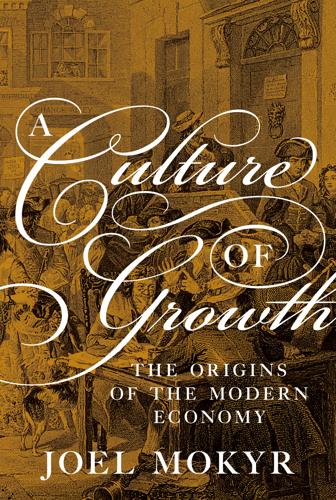
A Culture of Growth: The Origins of the Modern Economy
by
Joel Mokyr
Published 8 Jan 2016
Lively book markets, however could be found throughout the Yang-zhi delta. These facts clearly refute any kind of facile explanation of the Great Divergence based on a human capital advantage that the West may have had over China.9 Chow (2004, pp. 248–52) points to the many apparent advantages enjoyed by Chinese publishers. They could choose between two alternative printing techniques (woodblock and moveable type) suitable for different print runs, and before the Qing revolution there was little formal censorship in China, even if politically sensitive publications could be risky. Chow also argues that unlike the strict guild system and licensing requirements in Europe, in China there was essentially free entry into the industry.
…
And yet recent attempts to compare the number of books published in China and Europe, despite many pitfalls in interpreting the numbers, have shown that the number of volumes published in China was a small fraction of what was published in Europe (McDermott, 2006, pp. 70–71).10 Van Zanden, who has done the most careful quantitative work on book publishing in China and the West, has concluded that “movable type printing did not really take off in China before 1800” (Van Zanden, 2013, p. 336). For the Chinese ideographic script, with its many thousands of characters, moveable type was simply not cost effective and printing remained largely confined to block printing.11 To be sure, this ratio is affected by the multiple editions and translations of the same book in Europe, so that the actual difference in the size of the intellectual menu was probably less than the large gap in the number of titles suggests.
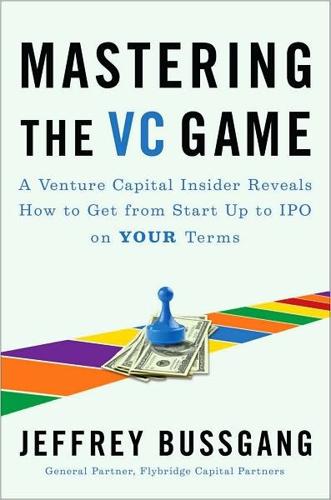
Mastering the VC Game: A Venture Capital Insider Reveals How to Get From Start-Up to IPO on Your Terms
by
Jeffrey Bussgang
Published 31 Mar 2010

The Library: A Fragile History
by
Arthur Der Weduwen
and
Andrew Pettegree
Published 14 Oct 2021
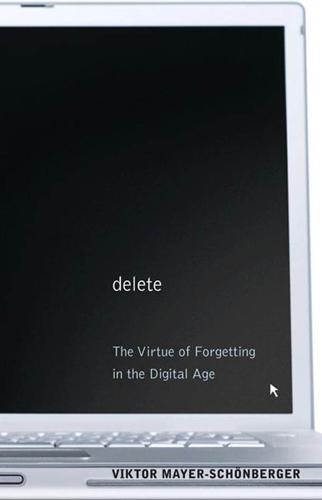
Delete: The Virtue of Forgetting in the Digital Age
by
Viktor Mayer-Schönberger
Published 1 Jan 2009
Well into the middle of the eighteenth century, for the printing of the famed Encyclopedie, 68 livres of the total 105 livres (65 percent) were spent on the cost of paper alone.34 Even with the changes brought about by Gutenberg’s printing press and the Reformation movement, for most people using books remained an elusive mechanism of enhancing their memory. This fact wasn’t dissimilar outside Europe, albeit for different reasons. In Islam, printing (instead of a scribe’s copying) was seen as blasphemy, mocking the glory of God, and thus prohibited.35 In China, printing presses had been known for centuries, although they employed woodblocks, not Gutenberg’s flexible and efficient moveable type. Chinese remained a logographic language, more cumbersome to use than a phonographic one utilizing an alphabet; and the highly stratified Chinese society lacked the tensions that fermented the changes in Europe in the sixteenth century.36 The Koreans, too, had developed a printing press using moveable type.

Progress: Ten Reasons to Look Forward to the Future
by
Johan Norberg
Published 31 Aug 2016
At this time the Arabs were far ahead of Europe in science and technology, and kept Greek philosophy alive when it was all but forgotten in the West. At the same time, the Song dynasty ruled over an economically and culturally flourishing China. The rule of law and a higher degree of economic freedom resulted in a climate of innovation. The Chinese used moveable type, gunpowder and the compass – the three inventions Francis Bacon saw as the most important for the world as late as 1620. But the Ming dynasty, which took power in the fourteenth century, was hostile to technology and foreigners. It made oceanic navigation a capital offence and burned the great ships that might have discovered the world.
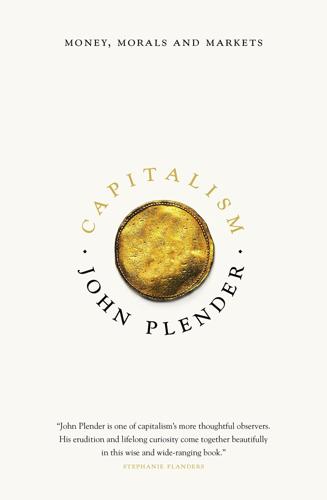
Capitalism: Money, Morals and Markets
by
John Plender
Published 27 Jul 2015
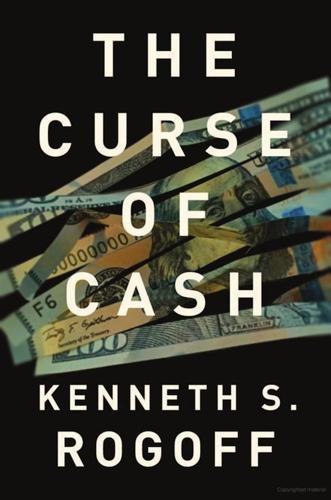
The Curse of Cash
by
Kenneth S Rogoff
Published 29 Aug 2016
Europe’s adoption of precious metals gave the European coinage much more versatility. Interestingly, though, China’s inferior coinage materials might have provided the impetus for its early introduction of paper money, the main technology we use today.15 China, of course, had fixed woodblock printing at least as far back as the Tang dynasty in the seventh century AD, and a moveable ceramic-type printing process around the time of the Song Dynasty in the eleventh century, long before Johannes Gutenberg produced his first Bible in 1455. The history of early paper money in China covers seven dynasties, each with its own monetary rules and institutions.
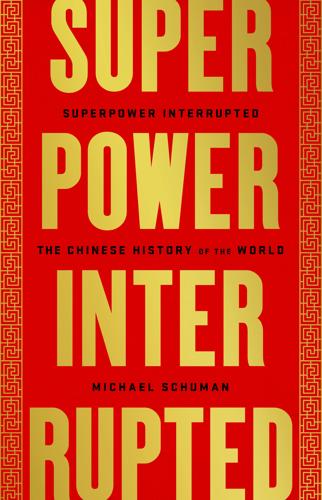
Superpower Interrupted: The Chinese History of the World
by
Michael Schuman
Published 8 Jun 2020